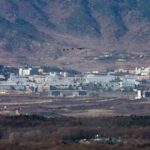① Hawaii Reopens to Tourists After Massive Wildfire

The island of Maui in Hawaii has started welcoming tourists again, two months after a massive wildfire. On October 8, Hawaii’s Tourism Authority announced that the travel ban imposed on the Maui region after the wildfire on August 8 has officially been lifted for specific villages such as Kaanapali, Nāpili, Honokōwai, and Kapalua.
Due to deep damage, Lahaina turned into a pile of ashes by the wildfire and has not yet announced a specific reopening date. Lahaina is one of the most popular tourist destinations in western Maui.
The western Maui region plans to gradually welcome back tourists, starting from the northernmost region, with a full reopening announced for November 1. Despite some opinions that the reopening is too early, the governor of Hawaii stated it is a decision for everyone.

Josh Green, the head of the Hawaii Tourism Department, described the reopening as a “phased reopening that benefits both residents and the local tourism industry.” According to the head of the Hawaii Tourism Department, the key reason for reopening is economic recovery. He stated the wildfire would cause about $2.23 billion of economic damage over the next two years.
Green hoped tourists could help the local economy by visiting local restaurants, hotels, and souvenir shops.
The decline in tourists has led to unemployment for Maui residents working in the tourism industry. Hawaii authorities announced that a hotel approximately 3 miles from the Ritz-Carlton in Kapalua, northwest of Maui, to the Kahana Villa, would soon open.
The Hawaiian government announced they will focus on immigrant management and housing policies before the reopening. Specific methods were proposed, such as converting short-term rental homes into long-term homes.
② Continued Opposition from Residents

Outraged residents have voiced opposition to the news of Maui’s reopening. After losing their homes to the wildfire, residents living in hotels raised concerns about not having enough time to find housing. Local Hawaiian media reported that “some residents will still live in hotels until the reopening.” They asked people to consider “how painful it would be for people who lost their homes overnight to see the happy faces of tourists.”
The displaced residents of Lahaina, who suffered the most damage, continued to oppose strongly. Local residents requested to postpone the reopening of Hawaii and submitted a petition signed by approximately 15,000 people. Even after the reopening of Hawaii, displaced residents in the Maui region are still unable to return to their pre-wildfire lives.
One of the residents stated, “I watched people die on the streets. My grandmother’s house is gone, and the entire village is dead.” A woman who suffered from the wildfire expressed her fear of even receiving questions related to the wildfire.

Hawaiian natives use a term called the Aloha spirit. This word symbolizes respect and love for everyone and a warmth that cares without expecting anything in return. After the fire, locals shared this abundant spirit by helping each other, but some expressed that the return of tourists has diminished this matter among the residents.
About 6,800 Lahaina residents who have lost their homes due to the wildfire are taking shelter in hotels or rented accommodations. Locals fear being pushed out of hotels when tourists start coming. One resident said, “The hasty move to resume tourism is a path for already suffering people to be forgotten.”
③ Economic Losses at a Severe Level

According to the Maui Economic Development Board, 70% of the total income of the entire island of Maui is directly or indirectly linked to the tourism industry. After the wildfire, Maui is experiencing a daily tourism income loss of about 17.5 billion KRW ($14.7 million). While Hawaiian authorities have asked tourists to refrain from visiting, some locals have appealed for tourists to return to Hawaii.
Since tourism plays a large part in Hawaii, the economic damage to Hawaiian residents is also significant. Last year, the money spent by tourists in Maui amounted to approximately 7.3 trillion KRW ($6.12 billion). As tourist numbers decline, Hawaiian residents are on the brink of a livelihood crisis. Residents expressed that they are on the verge of experiencing a second disaster after the wildfire.
The tourism industry, which had been stagnant after the spread of COVID-19, began to revive but had to go through another downturn due to the wildfire. Meanwhile, the wildfire in Hawaii has caused the most human and property damage in U.S. history in 100 years.
By Mia Han















Most Commented